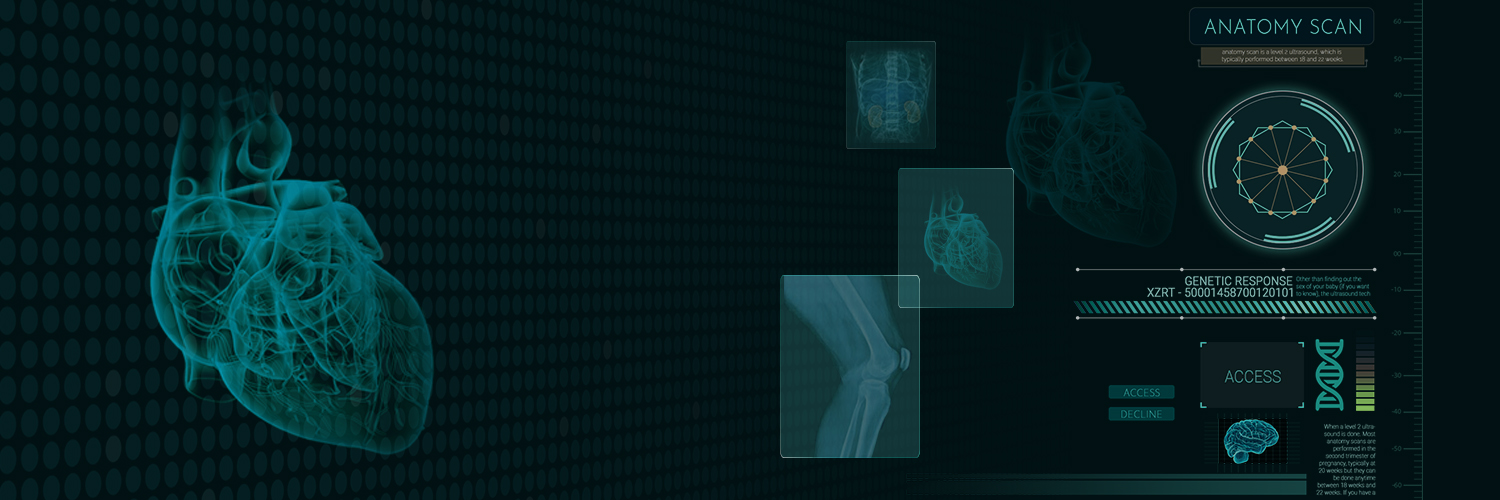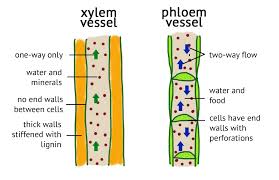TRANSPORT IN PLANTS
The plants have two transport systems:
- Xylem: Xylem carries water and minerals, and
- Phloem: Phloem carries the food materials which the plant makes. It also carries the hormones made by the plants in their root and shoot tips).
Xylem Vessels:
The xylem vessel is a non-living, long tube which runs like a drainpipe through the plant. Number of hollow dead cells (called vessel elements), join end to end to form xylem vessel. The xylem vessels branch into every leaf of the plant. In flowering plants, either only xylem vessels transport water or both xylem or both xylem vessels and tracheids transport water.
Mechanism of Transport of Water and Minerals in Plant
- The water and mineral absorbed by the root hair from the soil pass from cell to cell by osmosis. This passes through the epidermis, root cortex, endodermis and reach the root xylem. The xylem vessels of the root of the plant connect to the xylem vessels of its stem. So, the water, containing dissolved mineral enter from the root xylem vessels into the stem xylem vessels. The water and minerals carried by the xylem vessels in the stem reach the leaves.
- Water is sucked up by the xylem vessels. Transpiration is the evaporation of water from the leaves of plant. A lot of water from the leaves keeps on evaporating into the air through the stomata. This results in thelosing of water in the cells of the leaf. To make up this loss, water from the xylem vessels in the leaf will travel to the cells by osmosis. Thus, water constantly gets taken away from the top of the xylem vessels in the leaves to supply it to the cells in the leaves. This reduces the effective pressure at the top of the xylem vessels, to that water flows up into them. The continuous evaporation of water (or transpiration) from the cells of a leaf creates a kind of suction which pulls up water through the xylem vessels.
Translocation
- The transport of food from the leaves to other parts of the plant is called translocation.
Phloem
Phloem Contains Sieve Tubes. Like xylem vessels, many cells join end to end to form long tubes building up phloem.. Walls of cells in the phloem form sieve plates.The holes in the sieve plates allow the food to pass along the phloem tubes.
Mechanism of Transport of Food in a Plant
- The sugar (food) made in leaves is loaded in the sieve tubes of phloem tissue by using energy from ATP. Water then enters into sieve tubes containing sugar by the process of osmosis. This results in rise in the pressure of phloem tissue .This high pressure of phloem tissue moves the food to all the parts of the plant with less pressure in their tissues. This allows the phloem to transport food according to the needs of the plant.
TRANSPORT IN ANIMALS
The transportation of various materials and gases in animals take place through blood.
BLOOD
- Blood is one of the fluid connective tissues that help in transportation of various materials and gases.
- The main components of blood are:
- Plasma
- Red Blood corpuscles (or Red Blood Cells)
- White Blood corpuscles (or White Blood Cells)
Plasma
The liquid part (or fluid part) of blood is plasma. Plasma is a colourless liquid. Plasma consists of water with many substances dissolved in it. Plasma carries all these dissolved substances from one part to another part in the body. The Plasma liquid contains Red blood cells, white blood cells and platelets immersed.
Red Blood cells
The presence of a red pigment called haemoglobin inside Red blood cells makes them red. Red blood cells (RBC) carry oxygen from lungs to all the cells of the body. Red blood cells do not have nuclei.
white Blood cells
White blood cells fight infection and protect us from diseases. White blood cells make chemicals known as ‘antibodies’ to fight against infection. Hence, White blood cells are called soldiers of the body.
Platelets
Platelets are the tiny fragments of special cells formed in the bone marrow. Platelets help in the clotting of blood.
FUNCTIONS OF BLOOD
- Blood carries oxygen from the lungs to different parts of the body.
- Blood carries carbon dioxide from the body cells to the lungs for breathing out.
- Blood carries digested food from the small intestine to all the parts of the body.
- Blood carries hormones from the endocrine gland to different organs of the body, when in need
- Blood carries a waste product called urea from the liver to the kidneys for execration in urine.
- Blood protects the body from disease. This is because white blood cells kill the bacteria and other germs which cause disease.
- Blood regulates the body temperature. This is because the blood capillaries in our skin help to keep our body temperature constant at about 37o

